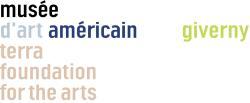
E x h i b i t i o n s
Expositions :
The Colony of American Artists
Exhibitions
Portrait of a Lady :
|
|
At Leisure: American PaintingsApril 1 - October 31, 2008 In the second half of the nineteenth century, the United States knew an unprecedented economic development and industrialisation. However, painters of this period seemed to favour the representations of leisure. Responding to the patrons’ demands, they depicted a “gilded age” of American society devoted to perpetual entertainment. Images of women sewing peacefully and children playing in everlasting flowered gardens, reflected a taste for the so-called “genre painting”. This new iconography was directly linked to the growth of an upper middle-class, to which artists belonged or identified themselves. About sixty paintings, drawings and prints from the Terra Foundation for American Art collection will introduce the visitor to one of the greatest invention of the modern era: leisure. |

Edward Henry Potthast |
Impressionist Giverny: a Colony of Artists, 1885 - 1915April 1 - July 1, 2007Giverny welcomed hundreds of artists from the late 1880s through World War I. Though Claude Monet did not encourage others to follow him to the village where he settled in 1883, Giverny quickly became a popular destination for international artists and students. Many artists stayed for long periods, socializing at the Hôtel Baudy, painting in and around the town, and often purchasing homes and studios, ultimately transforming the village into a flourishing artists’ colony. “Impressionist Giverny: A Colony of Artists, 1885–1915” is the first exhibition to study the international phenomenon of this artist community over a thirty year period, within the context of rural artists’ colonies. It consists of more than 80 paintings from European and American collections including approximately 30 works from the Terra Foundation for American Art, which has an exceptional collection of paintings by American artists who have worked in Giverny. Divided into four sections, the exhibition traces the chronological, stylistic and thematic evolution of art produced in the village. Alongside Claude Monet, it features famous impressionist artists such as John Leslie Breck, Frederick MacMonnies or Theodore Robinson and less well-known figures such as William Blair Bruce or Alson Clark. Numerous historic documents and photographs related to the Giverny colony contribute to the scholarly nature of the exhibition. |

John Leslie Breck
Claude Monet |
Images of the West:
|

William Bell |
Passing Through Paris : American Artists in France, 1860-1930April 1- October 30, 2006, Gallery B In the late-nineteenth century France became an international center for artistic training and production. American artists arrived in record numbers to study at the prestigious art academies, exhibit works at the salons and sojourn in the picturesque countryside. This exhibition presents works completed in France by American artists from 1860-1930 drawn from the collection of the Terra Foundation for American Art. Aesthetic developments linked to French schools of painting such as Barbizon or Impressionism are clearly evident as are recurring subjects including: bustling city streets and cafés, quaint villages, and appealing seashores. The choice of subject indicates not only that Americans were apt to frequent the same areas, but that they were responding to the demands of the growing art market in the United States. In fact, travel to France became a rite of passage for professional artists who then returned home to practice and teach what they had learned abroad. |

Frederick Carl Frieseke |
Americans at Home, 1860-1930April 1 – October 30, 2006, Gallery A In contrast with the works presented in Passing Through Paris : American Artists in France 1860-1930, this exhibition explores paintings executed in the United States that have a distinctly ‘American’ flavor. Given the pervading dominance of European culture and the fact that so many of these artists studied at European art academies, it was difficult to make the claim to a purely ‘American’ style ; however, there was undeniably a compelling need to define a national art. As in other domains, America was seeking to differentiate itself and declare its independence in art during this era. |
|
Three Roads Taken: The photographs of Paul StrandApril 1 - June 11, 2006, Gallery C From April to June, the Musée d’Art Américain Giverny welcomes an exhibition dedicated to the great American photographer Paul Strand (1890-1976). Organized by the J. Paul Getty Museum in Los Angeles, the exhibition will consist of approximately seventy-three photographs, drawn from the rich holding of Strand photographs in the Getty’s collection. The exhibition will be a chronological survey featuring his cubist- inspired still lifes from around 1916; his experimental landscapes from the 1930s and the 40s from New Mexico and Maine; and finally his series of portraits made in France, Italy, and Scotland from the 1950s. As one of the great photographers of the twentieth century, his legacy continues, and later generations of photographers have found inspiration in his work. |
|
Winslow Homer, poet of the seaJune 18 - September 24, 2006, Gallery C The Musée d’Art Américain Giverny and the Dulwich Picture Gallery organize Winslow Homer: Poet of the Sea, an exhibition that will introduce European audiences to one of America’s most treasured artists. This will be the first monographic exhibition in Europe on Winslow Homer, indisputably one of the finest American artists and indeed a major figure in all of 19th century painting. Though first celebrated for his Civil War and genre scenes, Winslow Homer is perhaps at his most magical when capturing water, whether in oil or watercolor. This exhibition will clearly represent the freshness of Homer’s approach, his inventiveness, and the underlying emotional and psychological complexity. Divided into five sections by geographical location, the exhibition will establish Homer’s extraordinary ability to adapt his style and technique to the environment, capturing the quintessence of the surrounding landscape in Gloucester, Cullercoats, Prout’s Neck, the Bahamas or Florida, and the Adirondacks. After opening at the Dulwich Picture Gallery in February 2006, the exhibition will travel to the Musée d’Art Américain Giverny from 18th June to 24th September 2006. |
|
Passing Through Paris : American Artists in France, 1860-1930April 1- October 30, 2005 In the late-nineteenth century France became an international center for artistic training and production. American artists arrived in record numbers to study at the prestigious art academies, exhibit works at the salons and sojourn in the picturesque countryside. This exhibition presents works completed in France by American artists from 1860-1930 drawn from the collection of the Terra Foundation for American Art. Aesthetic developments linked to French schools of painting such as Barbizon or Impressionism are clearly evident as are recurring subjects including: bustling city streets and cafés, quaint villages, and appealing seashores. The choice of subject indicates not only that Americans were apt to frequent the same areas, but that they were responding to the demands of the growing art market in the United States. In fact, travel to France became a rite of passage for professional artists who then returned home to practice and teach what they had learned abroad and Paris was the first stop. The fifty-five works presented in the exhibition include paintings by eminent American artists such as John Singer Sargent, James Abbott McNeill Whistler, Maurice Brazil Prendergast, Frederick Carl Frieseke and George Inness. The Terra Foundation for American Art possesses a pre-eminent collection of works American artists produced in France, reflecting the interests of its founder Daniel J. Terra. April 1 – October 30, 2005 documentation room, on the floor below Through reproductions of paintings, postcards and photographs, this brand new documentation space tells the story of Giverny and its artists. Impressionist master Claude Monet settled in the village in 1883, and Giverny quickly became a popular destination for international artists. Attracted to the village because of its proximity to Paris, its inexpensive, English-speaking hotel, and its natural beauty, young artists began to spend the summer or the entire year in Giverny, painting outdoors. Between 1887 and 1915, hundreds of artists worked in Giverny, painting villagers, haystacks, and the surrounding countryside. Short texts and numerous images help visitors understand the historic and artistic significance of this small village. |

Frederick Carl Frieseke (1874-1939) |
Mary Cassatt, Impressionist PrintmakerApril 1 – July 3, 2005 Books and exhibitions devoted to Mary Cassatt are rare in France despite the fact that this well-known American artist exhibited with the French Impressionists and produced a large body of work in a variety of techniques : painting, pastel, and prints. This exhibition focuses on the prints of Mary Cassatt, from her first forays into printmaking around 1880 to her magnificent aquatints from the 1890s. The Terra Foundation for the Arts has an exceptional collection of 12 of these aquatints. To this collection will be added 26 gems of the collections of the Bibliothèque nationale de France. The printed works of Mary Cassatt demonstrate the renewed interest in printmaking shared by the impressionists. Like them, she explored a variety of techniques (etching, monotype, drypoint engraving, and aquatint); enjoyed the experimentation involved in the various states or phases of printmaking; and found fascination in Japanese prints. Cassatt’s prints echo works by Edgar Degas and Camille Pissarro. |

Mary Cassatt (1844-1926) |
From Homer to Hopper :
|

Winslow Homer (1836-1910) |
American Artists from the Musée de BlérancourtJuly 10 – October 30, 2005 A selection of forty paintings and drawings from the Musée national de la coopération franco-américain in Blérancourt demonstrate the richness and diversity of the French government collection of American art. These paintings allow visitors to follow the development of American art from 1880 to 1920, a period marked by frequent travel between the two countries and a greater influence of Europe on American art. Paintings in the exhibition show not only the importance of French styles and techniques for American artists but also the French attraction for American art. Indeed, acquired by the French government, either at the Salons of the 19th century or in more recent years, each picture tells the complex story of the evolving French taste for American art. Finally, this exhibition offers visitors a chance to view this important collection of American art in conjunction with pictures on view in adjacent galleries from the Terra Foundation for American art. The collections complement each other and invite numerous comparisons. |

Frederick Childe Hassam (1859-1935) |
The American Scene, 1860-1910July 10 – October 30, 2005 To complement the works included in Passing Through Paris: American Artists in France 1860-1930, this exhibition presents paintings executed in the United States that have a distinctly ‘American’ flavor. Harbor scenes are paired with scenes of industry, both clear indications of a burgeoning economy in the expanding republic. Other popular subjects during this period were genre scenes and still life which reveal hidden moral messages and bourgeois aspirations. An exhibition of approximately twenty paintings, it includes works by: Winslow Homer, Fitz Hugh Lane, John Frederick Kensett, William Sydney Mount, John James Audubon and William Meritt Chase. |
Alfred T. Bricher (1837-1908) |
En Plein Air: Figures in a LandscapeApril 1 - October 31, 2004 A selection of paintings from the Terra Foundation for the Arts demonstrates the importance of plein air painting for American artists of the nineteenth century. Inspired by French realist artists seeking to capture the particularities of a landscape and French impressionists interested in the changing conditions of light and shade, many Americans adopted the practice of painting outdoors. These works, all painted in France, feature human figures integrated into landscape settings. |
|
An American Among The Nabis: Thomas Buford Meteyard(July 11 - October 31, 2004) During early years spent in France studying at the École des Beaux Arts, Thomas Buford Meteyard (1865-1928) was exposed to the latest currents in art: Impressionism, Post-Impressionism, Japonism and Symbolism. It was while summering in Giverny that Meteyard began to explore more experimental techniques. Unlike most of his compatriots, it seems that Meteyard, who spoke fluent French was able to integrate into exclusive French artistic and literary circles. In 1892, Meteyard was featured as one of the "young innovative painters" in two exhibitions at the Le Barc de Bouteville gallery, which also included the work of Nabis painters Paul Gauguin, Maurice Denis, Pierre Bonnard, Edouard Vuillard and others. He also participated in prestigious exhibitions in both Chicago and Boston. Upon his return to the United States, Meteyard continued to explore the modern aesthetics he first encountered in France through both painting and book illustrations. Thomas Buford Meteyard continues a series of focused exhibitions that highlight artists that found in Giverny an important place of experimentation and artistic collaboration. |
|
American Artists' Books in Europe: 1960-2000(June 11 - October 31, 2004) This exhibition will explore the achievements of recent American artists in the book media and study the transatlantic connections between American artists and European printers and printmakers. Although American artists have been illustrating books since the late nineteenth century, the development of true "Artists' Books" began in the 1960s as artists sought freedom from traditional means of art-making and viewing. Since this time period, numerous American artists travelled to Europe to produce books. Looking for the expertise offered by European printers and printmakers or seeking out a specific partner for collaboration, American artists established successful working relationships with European artists, writers, and printmakers. Occasionally, European presses offered American artists an economic advantage and allowed them to reach a foreign audience. Visually and intellectually pleasing, the artists' books in this exhibition will give visitors the opportunity to view a variety of printmaking, binding, and layout techniques employed by American artists over the past 40 years. The books will also serve as a basis for an overview of American art history from 1960 to the present, with examples of pop, minimalism, and conceptual art. |
|
Faces of America: from George Washington to Marilyn Monroe(April 1 - October 31, 2004) Portraiture is of particular importance in the history of American painting, and the Terra Foundation for the Arts counts numerous portraits among its collection. It allows one to simultaneously explore the history of symbolic representation of American society and the evolution of pictorial styles in American art. The portrait is the most significant genre for a nation in development. During colonial times, it was a means for the high and bourgeois society to give a favorable image of themselves (John Singleton Copley, Portrait of Mrs. John Stevens, for example). After the nation gained independence, the portrait was also used to political ends by painters of the young nation to affirm the status of public figures at the beginning of the nineteenth century (Rembrandt Peale, George Washington). In turn, it is the genre of choice for painters, in the second half of the 19th century, more concerned with realism, so as to convey, through the individualized traits of a person, a reality tinged with social concerns. (Winslow Homer, The Nurse, Thomas Eakins, Portrait of Thomas J. Eagan, Robert Wylie, The Breton Audience). During the final quarter of the nineteenth century, painters representing their family circles or those of their patrons captured the portrait of carefree bourgeois society (Edmund Charles Tarbell, In the Orchard). Realistic trends of the early 20th century open portraiture to the unidealized representation of individuals marginalized by society (Bellows, Nude Girl, Miss Leslie Hall, John Graham, The Green Chair). The exhibition will highlight another important strength of the Terra Foundation for the Arts collection and initiate the French public to a more sociological aspect of American painting. |
|
Edward Hopper: The Paris Years, 1906-1910(April 1 - July 4, 2004) The Whitney Museum is organizing a travelling exhibition of the early work of Edward Hopper in Paris. A retrospective of Edward Hopper's work was presented in 1989 in Marseille, Musée Cantini, it was the first solo-exhibition of an American artist (prior to 1945) ever presented in a French museum. The exhibition and catalogue were a huge critical and public success. Nevertheless, this exhibition did not present any work from Hopper's early years, and none of the works he had realized in Paris. Having recently finished his study at the New York School of Arts under Robert Henri, Edward Hopper decided to travel to Europe to see the works of the great masters firsthand. Living at 48, rue de Lille, just across the river from the Louvre, Hopper chose not to enrol in any school in Paris, rather he visited exhibitions and painted en plein air. The Paris years (in the course of three trips between 1906 and 1910) were seminal to the development of his later work. Hopper was much affected by his first trip to Paris, which lasted nearly ten months, all but five weeks of them spent in Paris. Years later he recalled: "I could just go a few steps and I'd see the Louvre across the river. From the corner of the rues du Bac and Lille you could see the Sacré-Coeur. It hung like a great vision in the air above the city." |
|
American BeautyPainting and Sculpture from the Detroit Institute of Arts, 1770 - 1920 02 March 2003 - 01 June 2003 |
|
Giverny in BloomWorks by American artists featuring the blooming Giverny. 02 March 2003 - 17 August 2003 |
 |
The People WorkAmerican Perspectives, 1840-1940
|
|
An Artistic Friendship : Beauford Delaney and Lawrence Calcagno15 June 2003 - 17 August 2003 |
|
Paris, Capital of America.The American Avant-Garde in Paris 1918-1939: An Ambivalent Fascination 31 August 2003 - 30 November 2003 |
|
From a Colony to a Collection :Celebrating the Tenth Anniversary of the MAAG 30 March 2002 - 16 June 2002 |
|
Jasper Johns :Prints 23 June 2002 - 8 September 2002 |
|
Paris-New York, Round Trip :Works from the Terra Foundation for the Arts and the Huntington Library 15 September 2002 - 30 November 2002 |
|
Japonisme in America :Works on Paper, 1880-1930 15 September 2002 - 30 November 2002 |
|
|
|
America and the Moderns, 1900 - 1950From July 25th to October 31st, 2000 Paintings and works on paper of the American art in the first half of the 20th century : Georgia o'Keeffe, Edward Hopper, Arthur Dove, Stuart Davis, Marsden Hartley, etc. |
|
Illustrated books of the 19th centuryFrom July 25th to October 31st, 2000 Display of books illustrated by American paintors of the 19th century : Winslow Homer, Elihn Vedder, Felix O. C. Darley and Thomas Cole. |
|
Theodore RobinsonFrom April 1st to July 16th, 2000 "Sketches and Photographies" Works by the young pupil and great admiror of Claude Monet. |
|
John Henry TwatchmanFrom April 1st to July 16th, 2000 "paintor and impressionist" Evocation of the history of impressionist engraving thru the works of this artist who travelled in Europe between 1880 and 1899. |
|
Robert CapaFrom July 20th, 1999 to October 31st, 1999 "Photographies" This exhibition of one hundred photographs by Robert Capa, 'the best war photograph in the world' is a real retrospective of Capa's work. This exhibition is organised by the Aperture Foundation and the International Center of Photography. |
|
Roxy PaineFrom June 23, 1998 to November 1, 1998 "Artificial Fields and Painting Machine" Through works such as his automatic painting machine, or artificial fields of poppies and mushrooms so like the real thing, the young New-York artist Roxy Paine invites us to reflect on nature and artistic creativity. |
|
Graciela IturbideFrom April 1, 1998 to June 14, 1998 "Images of the Spirit" Through her striking, poetic images of Mexican cultures and landscapes, Graciela Iturbide identifies dreamlike moments that express the marvelous as it can be found in the everyday. |
|
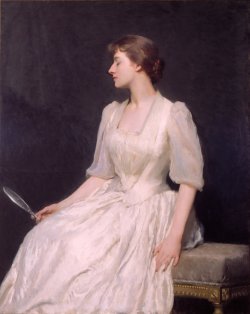



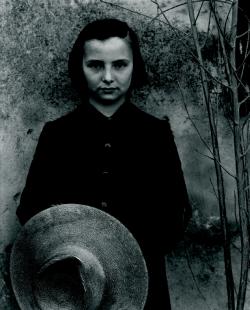
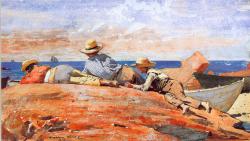

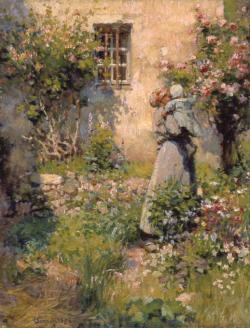



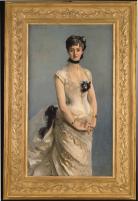
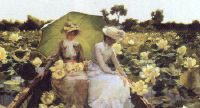






 Buy online your e-ticket to visit Giverny Claude Monet's home and gardens.
Buy online your e-ticket to visit Giverny Claude Monet's home and gardens.
